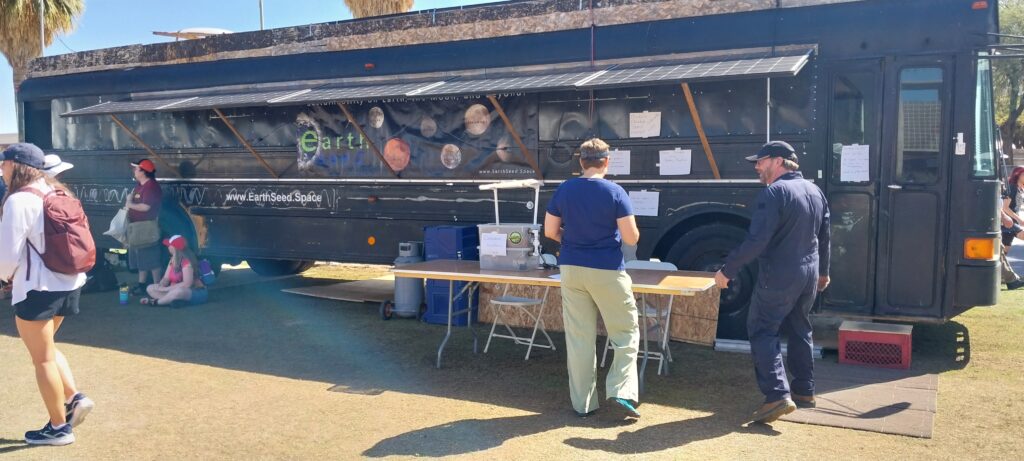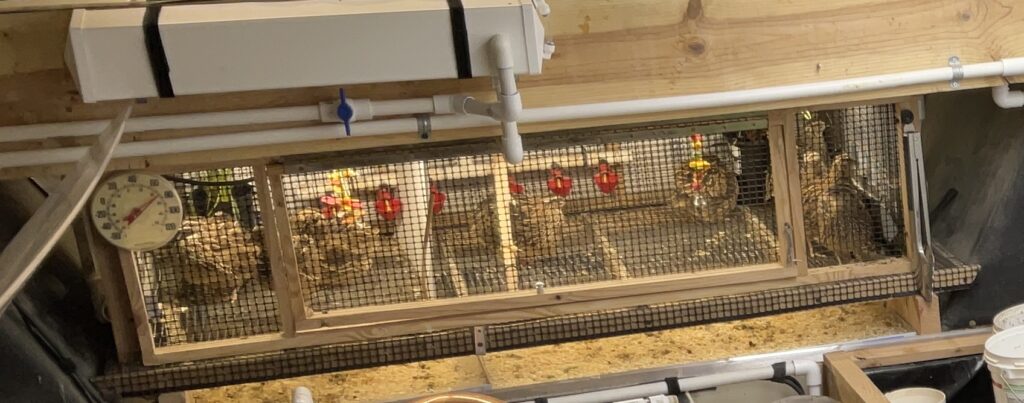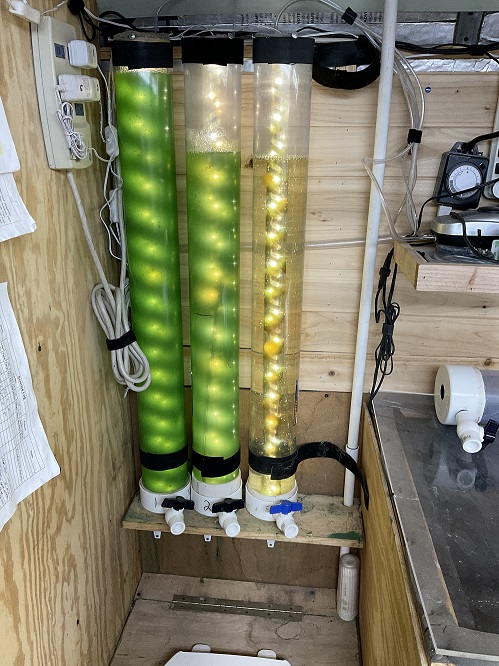
The Mobile Analog Space Habitat (MASH) is more than a space research project. Yes we are studying Ecological Life Support, but as we have gotten deeper into the project we have learned that this study is also a study of how ecosystems on Earth work. They link organisms in ways we did not previously appreciate. As a result, we are finding a wealth of understanding about Sustainable Living here on Earth.
While our goal was to develop a “life web” of targeted species that could sustain astronauts indefinitely in a habitat, the methods, and choices we make today are, in fact, Far removed from what could be called sustainable. As I describe the MASH and the flora and fauna that inhabit it, I hope to help you understand some takeaways that we can implement here on Earth.
The purpose of this “Life Web” is to close the four key “Loops” of our Ecological Life Support. These loops are Air, Water, Food, and Wastes.
The Beginning
In the beginning, we started with a straightforward, and very basic recirculating aquaculture that included a fish pond, and a garden. In that basic system I discovered that not only were there fish (tilapia) and the plants, but there was nitrifying bacteria. the basic process is that the fish do their business in the water. This adds solids, ammonia, and nitrates into the water. In the garden, nitrifying bacteria convert the ammonia and nitrates into nitrites, and it is these nitrites that feed the plants. This then returns clean water back to the fish.
After many iterations …
The original pond held a little over 100 gallons, supporting up to 50 fish, and an 8ft x 2ft garden. The farm has grown over the years to now include a 3ft wide x 7tf long marsh positioned between the pond and the 3ft x 10ft garden, and a small sump between the garden and the fish pond.

The Pond
The fish pond has a capacity of up to 150 gallons, and can support up to a maximum of 100 full grown Tilapia, and a smattering of Catfish. In the bottom is a section of tubing stretching the full length, that facilitates attaching various plants (plastic), a tube for the fish to breed in, and a collection of smaller tubes to facilitate hiding places for the young fry to avoid being eaten by the older fish.
Meal Worms
Above the pond is a shelf that houses bins where we are growing mealworms. As our population grows, we hope to reach a point that there will be enough to begin feeding these mealworms to the fish and quail. These are but one species of insect that are critical to the closing of the Air-Water-Food-Waste loops
The Marsh
The marsh is currently home to our crop of duckweed, some guppies, minnows, small frogs, and ghost shrimp. The marsh serves several purposes. First, there is a settling chamber that receives water from the pond, and slows it allowing solids to settle to be collected and added to our composting toilet. Duckweed is a food we are growing to add to the feed for the fish and the quail. The various small creatures inhabit the marsh to help clean up any solids that may pass the settlement chamber, and provide a means of insect control. Particularly against mosquitoes.
The Quail Coop
Beneath the marsh is located our Quail Coop that holds 6 Jumbo Cotournix Quail – 1 rooster and 5 hens. The hens have been delivering an egg each consistently for the past 4 months since adding them. Pleasantly, the rooster has only crowed on a few occasions when he was briefly separated from the hens. The hens have a pleasant cooing trill occasionally. Wastes from the quail, are collected weekly, and added to the toilet.
The Garden
The crops we are currently growing include broccoli, eggplant, bush beans, cabbage, lettuce, potatoes, corn and a few spices. The main portion of the garden is filled with Hydroton, a clay pellet that both provides a home for the nitrifying bacteria, and also facilitates ease of water flow. This summer we hope to begin cycling our plants, with new seedlings on the 90-day cycle.
The Composting Toilet
Currently, there is a composting toilet located near the door, used by our resident analog astronaut, and into which we deposit all organic wastes, be they from the kitchen, garden, worms, quail, or marsh. We are in preparations to convert our composting toilet into a consuming toilet, with the introduction of Black Soldier Fly larvae, who are voracious consumers of biological waste. As our population of larvae grows, we hope to reach a point that there will be enough to begin feeding these to the fish and quail along with the mealworms, duckweed, algae and earthworms.
Air Recycling
The MASH is NOT a sealed system, as we are still developing the myriad of components necessary to close our loops. One interesting bit, involves the use of Spirulina algae to consume carbon dioxide from the air, and release oxygen. It has been estimated that as little as 21 liters of algal solution could provide the carbon dioxide/oxygen regeneration for an adult human. Our Spirulina live in a set of 4 clear tubes, that facilitate harvesting without having to interfere with the daily functioning of the system.
The Water Recycler – Distiller
Currently in development is our water recycler, or distiller. The design calls for drawing urine from the toilet, diluting it with water from the garden, and distilling it on the roof. The clean, distilled water will then flow down through a UV sterilizer, and a mineralization filter, and finally into the drinking water tank.
Gray Water
The MASH does NOT generate any black water, because we separate the urine at the toilet, and solid wastes are consolidated and composted. That being said, we do generate gray water from kitchen sink, and shower. This is collected in a tank, then periodically pumped into the marsh where solids collect in the settling chamber, and any food particles/biologicals may be consumed by the small creatures living there.
Closing The Loops …
As I stated above, we are working to close the Air-Water-Food-Waste loops, in order to create a “closed loop” system that can sustain humans in a sealed habitat.
Air
Spirulina contribute to closing the Air loop by capturing CO2 and returning O2. In addition, they also help with the Food loop, as spirulina can be harvested, and dried as both a food supplement for humans, and a primary food element for the fish and quail.
Water
Our water cycle provides a home for fish, amphibians, and marsh plants, as well as feed for the plants. Urine is diluted with pond water, and recycled through the distiller to become drinking water – closing this loop.
Food
ALL of the species (except humans) are food for other species in a food-chain right out of nature: bacteria do major conversions, algae are food for quail ad fish, plants, fish, and quail are food for the human. And even the waste from the myriad species are processed by insects and quail to become food for others allowing us to close the Food Loop.
Wastes
What we call wastes, crop wastes, kitchen wastes, fish and quail wastes, and even human wastes are sources of food for insects such as Black Soldier Flies. In this way, we will soon be able to close the Waste Loop.




